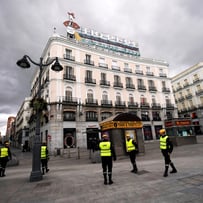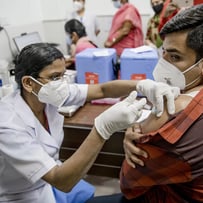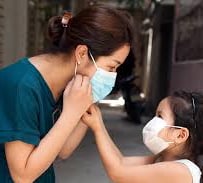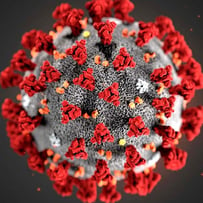COVID-19 Pandemic: A Global Crisis That Reshaped the World
From Lockdowns to Vaccines – A Journey Through the Defining Health Emergency of the 21st Century
WORLDHEALTHGOAT NEWS
Hindvarta Desk
6/9/20253 min read
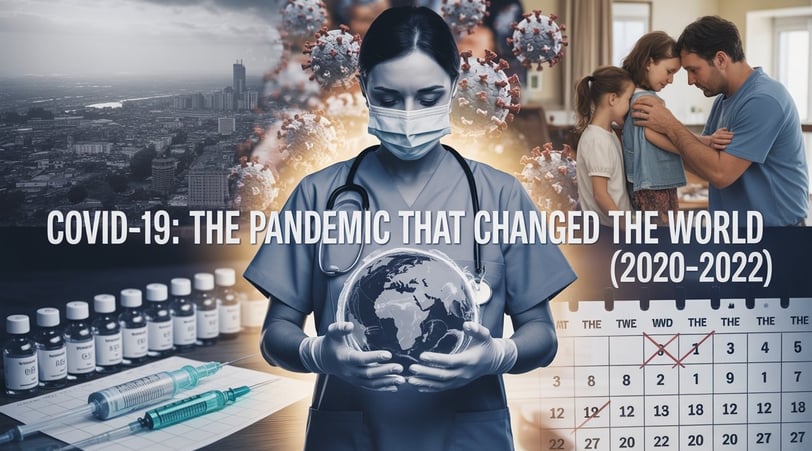

The Outbreak That Changed Everything
In late December 2019, reports emerged from Wuhan, China, of a mysterious pneumonia-like illness. Within weeks, scientists identified a novel coronavirus — later named SARS-CoV-2 — as the cause. By March 11, 2020, the World Health Organization (WHO) declared it a global pandemic. The disease it caused, COVID-19, rapidly spiraled into the most disruptive public health emergency the modern world has ever faced.
The virus spread like wildfire, shutting down cities, economies, and societies. Borders were closed. Flights were grounded. And humanity entered an unprecedented era of uncertainty, isolation, and adaptation.
Global Health Systems Under Siege
The initial impact was staggering. Hospitals in Italy, Iran, Spain, Brazil, and New York City became overwhelmed. Emergency rooms overflowed, ventilators were scarce, and doctors had to make heart-wrenching decisions about who to treat.
Symptoms ranged from mild fever and cough to life-threatening respiratory failure. The elderly and those with pre-existing conditions were especially vulnerable, but no age group was untouched.
In the darkest early months, cities experienced:
Mass burials in makeshift plots
Refrigerated trucks as overflow morgues
Healthcare workers working around the clock in full-body PPE
Economic Collapse and Social Disruption
As countries tried to contain the virus, lockdowns and stay-at-home orders were imposed globally. These safety measures, though necessary, triggered one of the worst economic downturns since the Great Depression.
Key impacts:
Over 400 million jobs lost globally at the peak
Small businesses shut down, many permanently
Stock markets crashed, though some rebounded due to tech sector booms
Supply chains disrupted, causing shortages from microchips to toilet paper
Education systems halted or went digital — affecting nearly 1.6 billion learners
But more than the economic fallout, it was the emotional and psychological toll that left deep scars. Anxiety, loneliness, depression, and domestic violence spiked during isolation periods.
A New Way of Living
COVID-19 redefined the meaning of daily life. Terms like “social distancing,” “flatten the curve,” and “quarantine” entered everyday conversation. People adapted to a new normal:
Wearing face masks became routine
Hand sanitizer and temperature checks became gatekeepers to public spaces
Zoom calls replaced office meetings and family gatherings
Online schooling and remote work became standard
Religious gatherings, concerts, weddings, funerals — every communal activity was halted or reshaped.
The Scientific Race for Survival
Scientists around the world worked at lightning speed to understand the virus’s behavior and build defenses. By late 2020, the first vaccines were ready — a historic triumph of global science.
Key milestones:
Pfizer-BioNTech and Moderna launched mRNA vaccines
Oxford-AstraZeneca, Johnson & Johnson, Covaxin, Sputnik V, and Sinopharm followed
The COVAX program was launched to ensure equitable vaccine access globally
However, vaccine hesitancy, inequitable distribution, and disinformation challenged the rollout. While wealthy nations reached high vaccination rates by mid-2021, many lower-income countries struggled to access doses.
Variants and Continued Challenges
Just as vaccination efforts expanded, new variants of concern emerged:
Delta Variant (2021) – highly transmissible, caused deadly waves in India, Brazil, and the U.S.
Omicron Variant (2021–2022) – even more contagious, though milder, it caused record case surges
These variants forced governments to reimpose lockdowns, travel bans, and curfews — testing public patience and political stability.
A Time of Loss and Resilience
By the end of 2022:
Over 6.5 million deaths were officially reported globally (many experts estimate far more)
Nearly 700 million cases had been confirmed
The world had witnessed an extraordinary display of resilience, especially among healthcare workers, scientists, and volunteers
Nations held memorials for those lost. Many families had empty chairs at their dinner tables. Others were still grieving, recovering, or rebuilding.
The Recovery Begins
By 2022, with mass vaccinations, antivirals like Paxlovid, and natural immunity from infections, many countries began transitioning to an endemic approach. Life cautiously resumed with new habits and permanent changes.
Hybrid work models became common
Mental health gained new urgency
Governments began reassessing public health infrastructure
The world started to ask: “Are we better prepared for the next pandemic?”
Lessons from a Global Crisis
The COVID-19 pandemic laid bare:
Weaknesses in global health systems
Inequality in vaccine access and healthcare
The importance of early warning systems and international cooperation
The risks of misinformation in a digital age
It also reminded us of the power of collective action, science, compassion, and community.
A Moment in History
The years 2020 to 2022 will forever be remembered not only for suffering and shutdowns—but also for human resilience, innovation, and the strength we found in solidarity.
“We are in this together. And we will get through this together.”
— WHO Director-General, Dr. Tedros Adhanom Ghebreyesus
